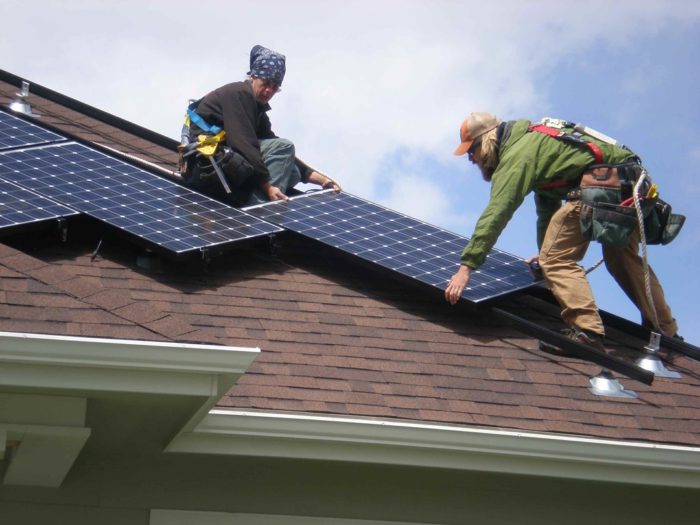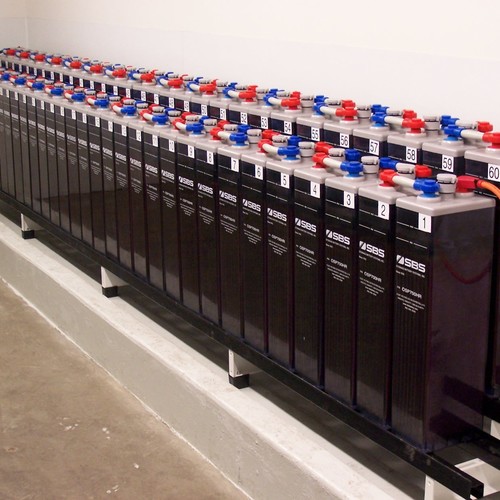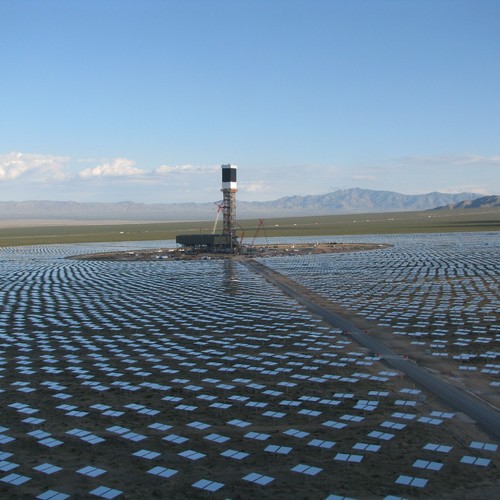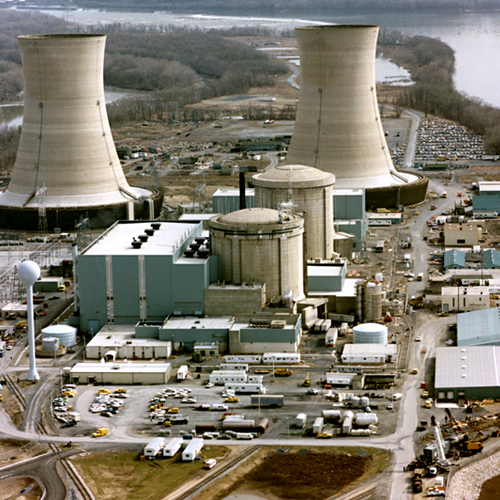Image Credit: Opower A gap where it hurts. Peak output for south-facing PV arrays comes about noon while the peak demand on the grid is about 5:00 p.m., a time when PV output sinks.
Image Credit: Opower
Most rooftop photovoltaic (PV) panels face south because the owners of the panels want to generate the most electricity possible. But a recent report says that shifting more PV panels to the west would produce electricity at a time when the electricity is much more useful to utilities, reducing the need for utilities to buy costly power to meet peak loads.
Writing in an Outlier blog for Opower, a company that analyzes energy data for utilities, Barry Fischer and Ben Harack note that most PV-equipped homes are producing much more power than they consume during the middle part of the day. The grid, however, really needs the power boost in the late afternoon.
Fischer and Harack said they looked at Opower data from 25,000 solar homes in the western U.S. along with public data about 110,000 residential projects installed in California since 2007.
“Our statistical results reveal a key disconnect between today’s solar panel landscape and the broader power system,” they write.
More west-facing panels would generate more power in the late afternoon and give utilities a “compelling alternative” to bringing additional power plants online.
That’s the same conclusion reached in a report from the Pecan Street Research Institute at the University of Texas at Austin last December. That report, however, was based on a much smaller sample — just 52 homes.
Lots of midday output
During the sunniest parts of the day, an average of 93 percent of the solar-equipped homes export electricity to the grid because the panels generate more electricity than the homes use. On one day in particular, a hot day in May of this year, the authors charted power exports in 25,000 western homes from about 8:00 in the morning until just before 4:00 in the afternoon.
After that, the solar homes actually used more than non-solar homes (see the graph in Image #2, below). The authors explain the situation this way: “Wondering why solar homes’ use of grid electricity shoots way above average after the sun goes down? It’s likely related to the elevated energy needs of their owners’ lifestyles: the typical solar home in our dataset is 34% larger than the typical non-solar home, 2.6 times as likely to own a pool, and 2.7 times as likely to enroll in an electric vehicle rate plan.”
At midday, between 11:00 a.m. and 1:00 p.m., the average solar home produces enough power to run itself and two non-solar homes at the same time.
But peak demand on the grid occurs about 5:00 p.m., when the output of south-facing panels has fallen sharply. By 4:00 p.m., only 27 percent of solar homes are exporting power to the grid; by 5:00 p.m., that’s fallen to 6 percent.
“Could solar homes be more helpful in satisfying peak electric demand on the grid?” the authors write. “The answer is certainly yes. And a small subset of homes appears to be leading the way.”
Panels face south for a reason
In California, only 9 percent of solar panels face within 10 degrees of due west, the blog says. A western orientation reduces their total output by between 10 percent and 20 percent when compared with south-facing panels, and that means less electricity for homeowners and lower earnings from net-metering.
Peak output for west-facing arrays is 2:00 p.m., the blog notes, two hours later than for south-facing panels.
And that helps explain why some utilities are offering financial incentives to homeowners to make the switch. The study says some plans pay customers as much as 35 cents per kWh for power produced late in the afternoon vs. 12 cents per kWh for power exported to the grid at noon.
“Offering a handsome incentive for well-timed solar power (or well-timed reductions in usage) can be a smart play for any utility seeking to avoid a painful alternative: paying notoriously high marginal costs to source electricity from ‘peaker’ power plants (e.g. 3 to 5x the normal price level),” the report says.
“An appropriate time-of-use rate framework could enable west-facing systems to achieve compelling monetary returns despite their reduced annual energy output,” it continues. “Our recent analysis of time-varying rates — specifically those that encourage nighttime electric car charging — suggests they can have a strong effect in shaping consumer behavior.”
The California Energy Commission recently decided to award subsidies of up to $500 for the installation of west-facing panels.
Weekly Newsletter
Get building science and energy efficiency advice, plus special offers, in your inbox.
















10 Comments
West facing PV panels and Utility peak demand
The issue of peak demand for Utilities is mainly due to air conditioning on hot summer days. There are other peak demand issues but this one gets the most press in most U.S. climate zones. Of, course, if you're off-grid, these are other people's problems.
One way of responding is to orient PV panels, as suggested above, so that panel output better aligns with peak demand. We could also consider big electrical storage devices.
There are other options as well. If summer solar heat gain could be reduced it would automatically benefit on hot afternoons. (In winters, we'd want to increase solar gain). Such an option would work on all buildings, with or without PV panels. Such option(s) exist.
So, one thought path is to retain our traditional electricity usage habits to sustain our comfort. We can build leaky houses and run a furnace or heat pump in winter to stay comfy. In summer, we can run the a/c to overcome the heat gain and stay cool and still comfy. We can get the electricity to do all of this by installing more PV or pick your favorite energy source. Or, we could more economically seal our houses and insulate and manage the solar heat gain seasonally. Then, we could still install more and more PV panels but maybe for more lofty purposes.
A financial factor in facing
A financial factor in facing rooftop panels is whether there is sufficient roof area with the aspect required. An electrical contractor I collaborate with is installing a 100kW system in regional Victoria at a bit over $1/W turnkey. This system from memory is north facing (southern hemisphere) but if hypothetically mounts were needed to give west facing orientation this cost/W would increase quite a bit on a percentage basis. PV system prices in the US are still a lot higher/W than they are in Australia and Germany - which I don't understand even after reading a number of reports discussing this issue - so turnkey system cost might be less sensitive to mount price but as PV system costs continue to drop in the US, mount price might become more significant as a fraction of total cost.
But a 35c/KWH feedin tariff would definitely help cover any extra mount cost! Feedin tariffs in Australia where available are down to 6c-8c/KWH with some retailers topping this up a bit.
Next Big Thing
Someone should develop a low cost two position tracker and have the best of both worlds. Certainly ground and flat roof arrays could be positioned pretty easily.
Incentives...
"An analysis shows that PV output peaks hours before the grid really needs it"
Well, when the grid really pays for what the grid really needs, the grid will probably get it.
Honestly, right now what the grid needs is more carbon free energy, and south-facing panels maximizes that. If & when we get enough saturation that we really need to shift solar output, incentivize west-facing panels, but until then ...
what does this mean for existing houses and roof design?
Is the output difference really only 10-20% between south facing and west facing panels? Is there even less of a difference in areas with a lot of overcast days? Does this mean people with existing roofs more than 20 degrees or so off of due south might still consider solar panels if they are off in the western direction? Is peak electrical use before 4pm in colder areas of the country during the heating season?
Response to Hallie Bowie
Hallie,
Q. "Is the output difference really only 10-20% between south facing and west facing panels?"
A. Yes.
Q. "Is there even less of a difference in areas with a lot of overcast days?"
A. If the day is overcast, it's safe to say that 0 kWh = 0 kWh. Saying that the output of the PV array is zero on an overcast day is only a slight exaggeration.
Q. "Does this mean people with existing roofs more than 20 degrees or so off of due south might still consider solar panels if they are off in the western direction?"
A. Yes. They might and they do.
Q. "Is peak electrical use before 4 pm in colder areas of the country during the heating season?"
A. In cold regions like Quebec, peak electrical usage occurs during cold snaps in winter.
Westerly facing PV
We work mostly in PG&E territory and switch solar customers to the E6 rate schedule where a kWhr during peak (1-7pm weekdays) is worth almost three times as much during off-peak times. As a result, we emphasize W/SW facing arrays for solar customers whenever possible.
As a side note, solar customers with W/SW arrays are not only saving more $, but also helping utilities to avoid bringing online more costly and less efficient sources of generation.
West-Facing Solar Panels
With that same logic we should clear as much land as possible and design parking lots around the busiest day of the shopping year.
If you can move load around
If you can move load around to coincide with PV generation this can help the financial return quite a bit depending on the relevant feedin and electricity tariffs. I've just modeled a business in regional Vic that has a demand profile that differs depending on when they do their manufacturing process. I've asked them if they can move this around a bit to make better use of their panels. The Australian Energy Market Operator 100% Renewable Energy Australia study assumed, from memory, that 5% of demand can be shifted to meet demand. This was for the whole grid including sites like smelters that can't stop the process without sending in blokes with jackhammers to dig out the solid aluminium. I think quite a few homes and industrial/commercial sites can be more flexible. We have some flexibility at our house as to when we use an electric dehydrator, chainsaw, washing machine, dishwasher, oven, mower and so on.
Pumped Hydro Storage
The US grid already has more than 20 GigaWatts of storage in the form of pumped hydro storage facilities according to the Nat'l Hydropower Association. When electricity demand is low, inexpensive excess electricity pumps water upward to a higher elevation reservoir. When electricity demand is high, stored water flows downward to the lower reservoir, spinning a turbine to generate higher priced electricity. The turbine typically serves double duty, running backwards to serve as the pump. Good pumped hydro sites can run at 80% efficiency, with losses divided between frictional losses and evaporation of water pumped to the higher reservoir http://en.wikipedia.org/wiki/Pumped-storage_hydroelectricity Of course, periodic time of day electricity price fluctuations can greatly exceed 20%. New technology such as improved batteries, or west facing PV etc. may provide lower cost alternatives at a future date. The cost per stored megawatt will determine which electricity storage method is preferred going forward. In most locations, existing and proposed pumped hydro storage facilities should allow significantly higher proportions of new renewable solar and wind electricity generation to be added to the grid, while reliably balancing supply and load.
Log in or create an account to post a comment.
Sign up Log in